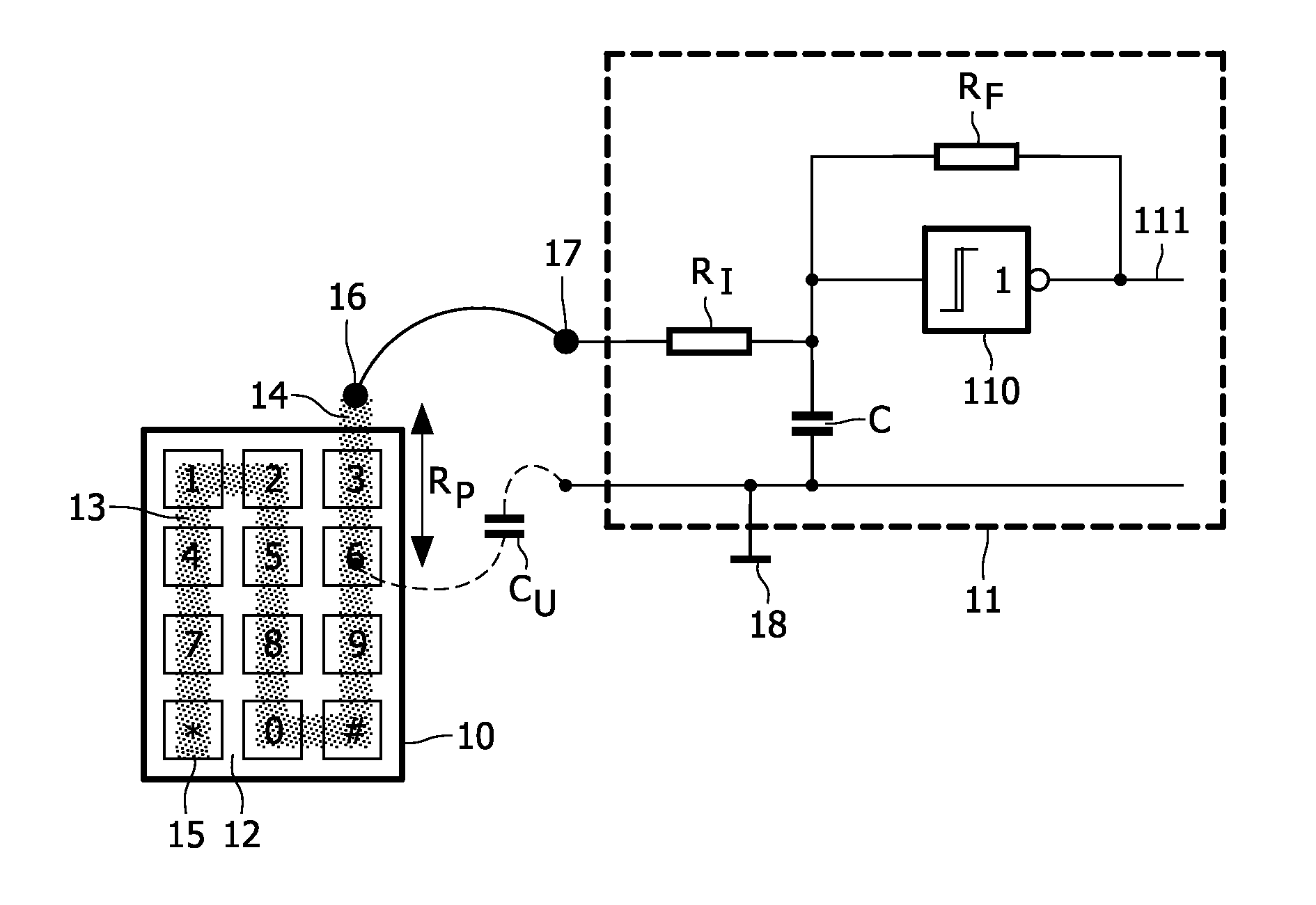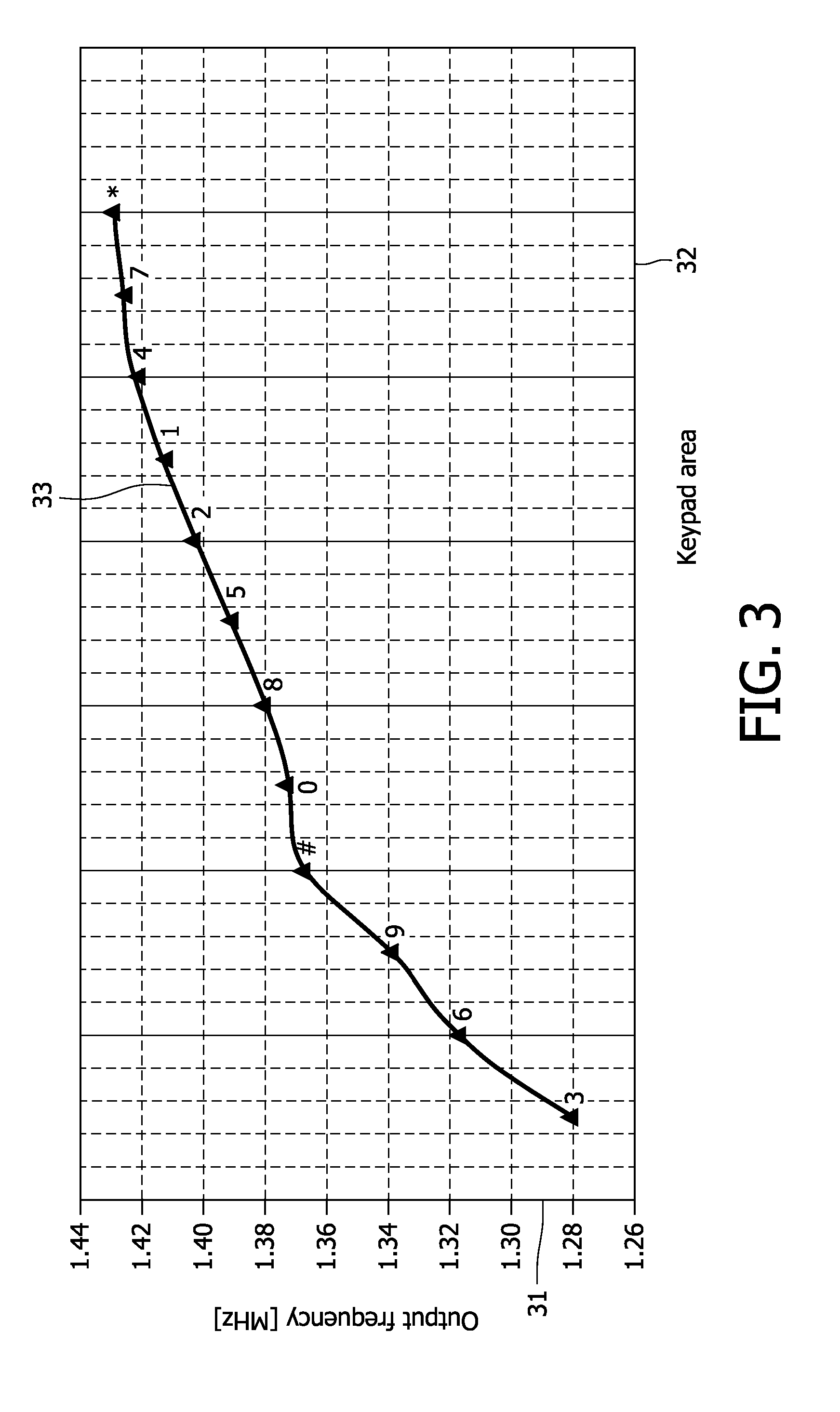Non-linear resistive touch sensor
a resistive touch sensor and non-linear technology, applied in the field of touch sensors, can solve the problems of complex and expensive provisioning of a number of terminals and corresponding sensing channels, and achieve the effects of eliminating the effect, simplifying the construction of the touch sensor, and being flexibl
- Summary
- Abstract
- Description
- Claims
- Application Information
AI Technical Summary
Benefits of technology
Problems solved by technology
Method used
Image
Examples
Embodiment Construction
[0025]FIG. 1 shows a touch sensor and a detecting device. The touch sensor 10 has a support layer 12 of an insulating material and a resistive layer 13 applied to the support layer. The resistive layer is formed by a resistive material shaped according to an elongated pattern forming a sequence of touch positions. The Fig. shows a sequence of a numerical keyboard, whereas the elongated pattern has the from of a strip passing along the digits in a predefined order (*, 7, 4, 1, 2, 5, 8, 0, #, 9, 6, 3).
[0026]It is noted that the layout of the keypad shown in the Fig. is not part of the resistive strip. It is a layout provided on the support layer on top of the resistive layer, which visually informs the user of the user interface.
[0027]The strip has, at a connectable end 14 of the sequence, a single terminal 16 arranged to be coupled to a sense input 17 of a detecting device 11. The other end of the strip, called the open end 15 of the sequence opposite to the connectable end of the se...
PUM
 Login to View More
Login to View More Abstract
Description
Claims
Application Information
 Login to View More
Login to View More - R&D
- Intellectual Property
- Life Sciences
- Materials
- Tech Scout
- Unparalleled Data Quality
- Higher Quality Content
- 60% Fewer Hallucinations
Browse by: Latest US Patents, China's latest patents, Technical Efficacy Thesaurus, Application Domain, Technology Topic, Popular Technical Reports.
© 2025 PatSnap. All rights reserved.Legal|Privacy policy|Modern Slavery Act Transparency Statement|Sitemap|About US| Contact US: help@patsnap.com



